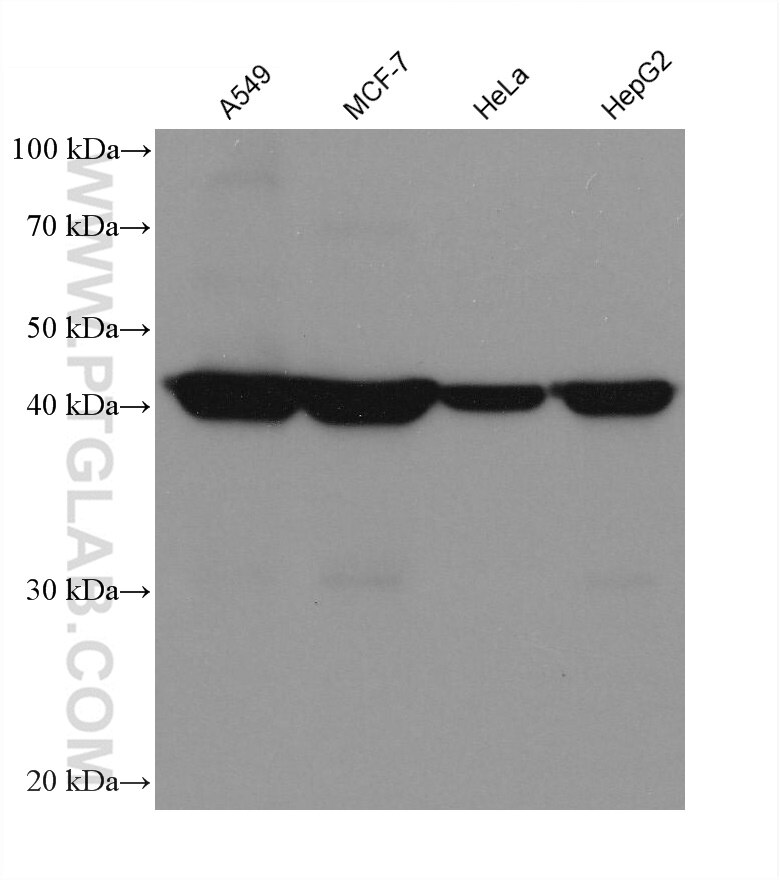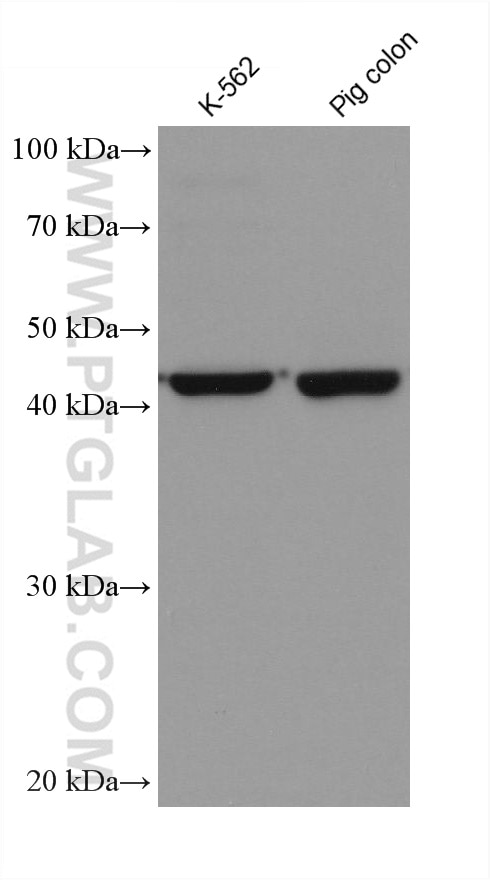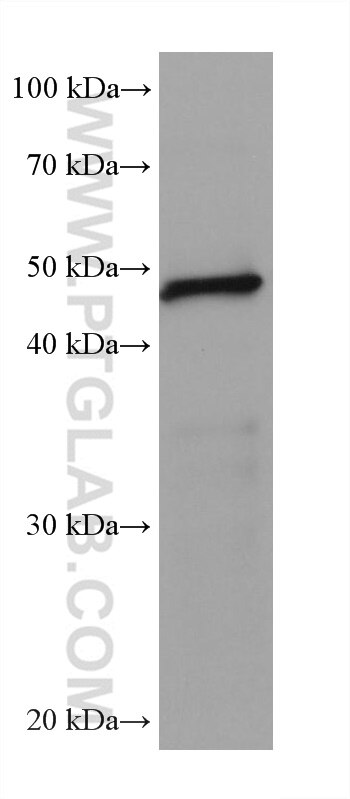Anticorps Monoclonal anti-Septin 9
Septin 9 Monoclonal Antibody for WB, ELISA
Hôte / Isotype
Mouse / IgG1
Réactivité testée
Humain, porc, rat
Applications
WB, ELISA
Conjugaison
Non conjugué
CloneNo.
1C6F10
N° de cat : 67548-1-Ig
Synonymes
Galerie de données de validation
Applications testées
| Résultats positifs en WB | tissu de côlon de porc, cellules A549, cellules HeLa, cellules HepG2, cellules MCF-7, tissu de côlon de rat |
Dilution recommandée
| Application | Dilution |
|---|---|
| Western Blot (WB) | WB : 1:20000-1:100000 |
| It is recommended that this reagent should be titrated in each testing system to obtain optimal results. | |
| Sample-dependent, check data in validation data gallery | |
Informations sur le produit
67548-1-Ig cible Septin 9 dans les applications de WB, ELISA et montre une réactivité avec des échantillons Humain, porc, rat
| Réactivité | Humain, porc, rat |
| Hôte / Isotype | Mouse / IgG1 |
| Clonalité | Monoclonal |
| Type | Anticorps |
| Immunogène | Septin 9 Protéine recombinante Ag18047 |
| Nom complet | septin 9 |
| Masse moléculaire calculée | 64 kDa |
| Poids moléculaire observé | 42 kDa |
| Numéro d’acquisition GenBank | BC021192 |
| Symbole du gène | SEPT9 |
| Identification du gène (NCBI) | 10801 |
| Conjugaison | Non conjugué |
| Forme | Liquide |
| Méthode de purification | Purification par protéine G |
| Tampon de stockage | PBS with 0.02% sodium azide and 50% glycerol |
| Conditions de stockage | Stocker à -20°C. Stable pendant un an après l'expédition. L'aliquotage n'est pas nécessaire pour le stockage à -20oC Les 20ul contiennent 0,1% de BSA. |
Informations générales
SEPT9 belongs to the septin family which is a group of highly conserved GTP-binding proteins in eukaryotes. SEPT9 plays a role in cytokinesis, the final stage of cell division. SEPT9 gene methylation has been implicated as a biomarker for colorectal cancer(CRC).
Protocole
| Product Specific Protocols | |
|---|---|
| WB protocol for Septin 9 antibody 67548-1-Ig | Download protocol |
| Standard Protocols | |
|---|---|
| Click here to view our Standard Protocols |




